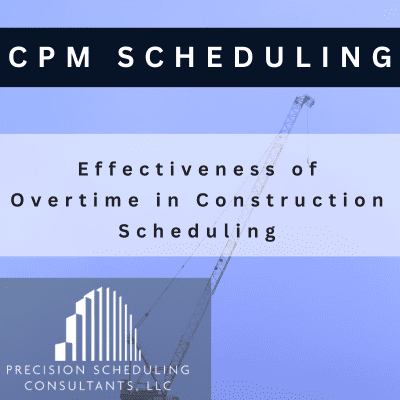Understanding Overtime as a Schedule Acceleration Strategy
The use of overtime as an effective construction schedule acceleration strategy often appears straightforward. Many view it as a simple means to add hours to the workweek and shorten activity durations. However, to achieve the desired results, you must identify and analyze the long-term effects of overtime in construction scheduling before implementing an acceleration plan.
Effects of Prolonged Overtime in Construction
Productivity can dramatically drop after only a few weeks of scheduled overtime. Research indicates that prolonged overtime can cause productivity drops of over 30%. As fatigue sets in, workers might deliver less quality work and become increasingly prone to errors. Consequently, you should carefully consider these potential impacts before relying heavily on overtime in construction schedules.
Strategic Planning and Resource Loading
Fortunately, proper planning and resource loading within the construction schedule can lead to effective overtime acceleration. Begin by assessing the project scope and identifying peak resource demands. By contrasting this information with available crew sizes, you can determine when overtime in construction scheduling makes sense. For optimal results, use a strategic approach rather than simply extending work hours.
Cycling Overtime Scheduling by Crews
Consider cycling overtime by crews as an effective strategy to maintain productivity. This process involves rotating different crews through periods of overtime rather than requiring all teams to work excessive hours simultaneously. By allowing adequate recovery time between overtime periods, you can mitigate fatigue and maintain higher productivity levels in construction tasks.
Scheduling Overtime Effectively
When scheduling overtime, ensure that you only do so when resource demands exceed available crew sizes. This approach helps to optimize labor costs and minimizes downtime due to overworked employees. Additionally, clearly communicate overtime expectations and project timelines to ensure everyone remains aligned when planning construction schedules.
Limiting Overtime Duration
Moreover, limiting the duration of overtime cycles is crucial to preventing dramatic productivity losses. For example, rather than implementing continuous overtime, consider using short bursts followed by regular hours. This technique allows workers to recuperate and return to peak performance levels during construction scheduling.
Monitoring Effects on Productivity
Implementing overtime requires consistent monitoring of productivity levels. By tracking performance data, you can identify trends and adjust future schedules accordingly. Be proactive in addressing declining productivity, and adjust overtime strategies to maintain a productive work environment in construction projects.
In summary, while overtime can serve as an effective construction schedule acceleration strategy, know the potential pitfalls. Focus on proper planning and resource loading, cycling overtime by crews, and limiting its duration. By doing so, you can minimize productivity losses and keep construction project timelines on track. Ultimately, thoughtful implementation of overtime in construction scheduling can deliver the desired acceleration without jeopardizing the overall success of your construction project.


